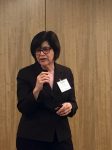UX (user experience) design processes are constantly evolving as the industry continues to embrace IoT technologies. With this evolution comes a need to focus on improving UX protocols in the design of medical devices.
UX design processes are constantly evolving as the industry continues to embrace IoT (Internet of Things) technologies. With this evolution comes a need to focus on improving UX (User Experience) protocols in the design of medical devices. UX, driven by human factors engineering (HFE) requirements, has become a foundational component in user-centered design to ensure better treatments and patient outcomes. Strong UX protocols give designers and manufacturers a competitive edge in an increasingly crowded market and help to ensure regulatory approval from global bodies that are now requiring robust use-error mitigation processes.
Both medical device design and the variety of end users are evolving. Doctors, nurses, and medical technicians are a homogenous user group, but patients and lay caregivers have wildly varying abilities due to demographics, education, and comorbidities. When developing devices for a global market, there must also be an understanding of cultural and regional differences among end users.
What’s more, the types of medical devices seeking commercialization have expanded. Self-care devices, robot-assisted devices, and a growing focus on interventional medicine, minimally invasive procedures, and connected diagnostic and preventative care technologies, are changing both healthcare and the needs of users. At the same time, insurers and healthcare facilities are focused on reducing overall operating costs through the use of distance care and telehealth options that transfer some workflows to relieve pressures on the clinical environment. These types of medical devices, therefore, require much more simplistic interfaces to support the nonclinical end-user.
Subscribe to the MedTech Intelligence weekly newsletter to stay up to date on the latest news and information on medical device development and regulation.
As electronics become more ubiquitous, their costs continue to fall. Even the most simple devices may contain touchscreen displays controlled by complex software routines, enabling the operator to access hierarchical data. This can complicate the ability to quickly find and interface with important displays and controls. Thus, creating a user-friendly workflow that directs the operator from one screen to another is critically important to manage these extensive interface demands. Often referred to as Digital Health, these new technological trends have all but replaced mechanical and binary (on-off) analog circuits, which reduces unit costs for sophisticated interfaces.
Recognizing the importance and the speed with which the digital healthcare transformation is underway, the FDA CDRH created the Digital Health Center of Excellence (DHCoE). This group aligns and coordinates digital health work across the FDA. The group was not created to determine marketing authorization decisions, but to provide regulatory advice and support to the FDA’s regulatory review of digital health technologies. Now in phase 3 of its planning, the charge is to be a partner in advancing technological opportunities with developers and issue guidance to modernize FDA policies in this new digital environment.
The mission of DHCoE to ensure “timely access to high-quality, safe, and effective digital health products,” coincides with the importance of the user experience in medical device design and development.
A common misconception is that UX is only about making the device interface easy to use. UX embodies numerous issues that impact design considerations. It is a complete ecosystem that embraces the device and includes hardware, software, unified communications, and location-based services.
Medical devices should be aesthetically pleasing to the user—whether in-home or in a clinical environment. They should also seamlessly incorporate into the care environment wherever it may be. Devices should be intuitive and easy to navigate—much like the technology that controls smart TVs, digital appliances, and personal mobile products.
Keeping that guidance in mind, good UX design requires a holistic approach that leverages human factors engineering, industrial design, and graphic user interface (GUI) to unite purposely intentioned aesthetics with optimized usability. This holistic approach maximizes the user experience with the device in its relationship to the use environment.
The beginning of the design process is the optimum time to bring in the UX team. The UX component of the design process will provide a strong foundation for ongoing design activities, as UX has a significant impact on the marketability of the device. Failure to consider these factors early on may result in information becoming siloed among different design teams, which can result in expensive and time-consuming workarounds.
As a development partner at the onset of a project, UX experts and methodologies can be incorporated into the activities of the entire design and development teams from concept to commercialization. Beginning with generative HFE user studies—or contextual inquiry (CI)—specific interface needs, expectations, and aspirations are established, all of which drive subsequent design objectives and logic workflows. It is important for designers to remember they are not designing interfaces for themselves. The device should be validated against CI studies that establish user requirements.
Using CI as a foundational exercise helps establish the spoken and unspoken needs of all stakeholders. It identifies and characterizes potential use case challenges and work-around patterns and implications. Potential use errors or related hazards are identified, which results in more detailed and robust device requirements.
Participants in a CI study provide a kind of “show me, don’t tell me” exercise through hands-on demonstrations of how the device would be used in a specific environment. For example, in a home environment, the participant can verbalize how they use the device, but CI visualization uncovers how the participant might be using unintentional workarounds to achieve the prescribed outcomes. Therefore, the CI process can identify issues that could be alleviated with a redesign of the device or a completely new approach. The CI process includes four important strategies: planning and logistics, fieldwork, analyzing the data captured, and finally translating and synthesizing that data into actionable recommendations to the design and development teams.
Designers engaged in healthcare projects must understand the specifics of the environment in which the device will be used. If designing for patient interaction with the device, UX designers need to consider such characteristics as the age(s) of the users, physiological challenges, mental states, comfort levels, and skills related to the technology. If the device is intended for medical staff, designers need to study how these end users would interact with the device in their natural environment. This includes understanding the expected workflow (e.g. users might need to operate adjacent devices in order to complete the task at hand). UX designers should seek to optimize the interaction with the device and eliminate unnecessary steps that may distract the clinician from their main task, without taking shortcuts that may increase user-error.
UX designers ideally work alongside HFEs to conduct GUI design studies. This resource partnership provides a design-agnostic observer (HFE) to objectively observe user interaction and apply unbiased analysis to the next iteration of the design. For example, if redesigning an existing product, the new GUI should consider maintaining some legacy elements while addressing any current challenges and new elements.
Designers also need to thoroughly understand business and market strategies for future product updates, established by corporate stakeholders, in order to determine an implementation plan for the design “platform.” The design of the interface then takes into account how to structure the GUI architecture to allow for these future updates to be easily integrated.
UX tools include visual and branding sketching, workflow/logic charting, journey mapping, GUI wireframing, and user testing. Adobe XD and Axure are common software design tools for creating early simulations and prototypes, specifications, and diagrams and can assist designers in determining the best characteristics and interactions with a potential design. These digital outputs also streamline the transfer of UX design to software engineering for accurate coding into the production design.
Using Virtual Reality (VR) and Augmented Reality (AR) tools during the research phase provides designers with simulated 3-dimensional perspectives to evaluate spatial quality, physical reach, and visualization of the UI. VR technology, which is used in early device development, has rapidly evolved to become an affordable, valuable and easy-to-use development tool. VR and AR tools also can reduce or eliminate far more costly approaches such as physical mockup development.
Innovations in mission-critical products such as medical devices have always been transformative and are expected to increase at a rapid pace, as will the technology ecosystems that drive their designs. Operational success will always be at the center of this transformation to ensure operational value for the end-user, whether it be patient, caregiver, clinician, or maintenance teams within the healthcare continuum. Success requires a clear focus driven by the HFE charter and realized through a thorough UX design approach that ensures future devices will be deployed safely and efficiently with minimal training and gain regulatory approvals and market acceptance.
The expansion of BlackH?gen’s HFE team and other critical usability-focused design groups, such as the…
Hägen, who was a contributor to Medtech Intelligence, spent 28 years building BlackHägen Design to…
The acquisition expands Veranex’s footprint for product design engineering services across the U.S., with combined…
Bringing design and quality assurance processes together earlier in the device development process can reduce…
Irina Samkova is Lead UX Designer at BlackHägen Design. Irina received a bachelor’s degree in Graphic Design from New York City College of Technology. Though she started her career with a focus on designing non-interactive visual content, she soon found herself drawn to the world of UI/UX. It was a natural transition as the rapid pace of creating graphics for digital products had to be combined with a relentless focus on the end user and their needs. Tying the end-product to user needs is the core design approach that Irina always takes.
Philip Remedios is principal and design director at BlackHägen Design, an R&D consultancy focused on medical device innovation. With a combined design and engineering background, Remedios has spent most of his 35-year career in executive consulting roles, developing project plans and managing integrated technical teams, schedules and budgets. He has a bachelor of science degree in industrial design/transportation from the Art Center College of Design in California and is a named inventor on 34 patents to date.
Your email address will not be published.
Developing an Effective and Sustainable Regulatory Strategy for Today’s Global Market.
Join us for a panel discussion on use of real-world evidence in regulatory assessments. Get an up-to-date perspective on the key concerns, benefits, challenges and approaches that manufacturers must consider when using real-world evidence to meet their regulatory submission requirements.
© Copyright 2015 – 2023 Innovative Publishing Co., Inc., All Rights Reserved
Other Innovative Publishing Co., Inc. Sites: Food Safety Tech | Cannabis Industry Journal
Please take this Manufacturing Trends Survey.
The survey is 11 multiple choice questions and should take 3-4 minutes to complete. Tony Blank is president of Infinity Biomedical Group. He is formerly the cofounder of Barton & Blank, a regulatory consulting firm specializing in providing strategic and tactical regulatory support for medical devices and combination products. Immediately prior to forming Barton & Blank, Blank spent 12 years at Boston Scientific Corp. in both corporate and business regulatory leadership roles. Under his leadership of the cardiovascular regulatory teams, Boston Scientific obtained numerous regulatory approvals for cardiovascular medical devices and combination products—among these being worldwide regulatory approvals for drug-eluting stents, implantable cardioverter defibrillators (ICD) and cardiac resynchronization therapy defibrillators (CRT-D), cardiac pacemakers and cardiac resynchronization therapy pacemakers (CRT-P), and detachable coils for peripheral embolization. Blank has likewise been an active representative for Boston Scientific, the medical device industry and the regulatory profession on numerous policy issues working with AdvaMed. Among these activities has been participation in numerous Industry Working Groups—including the Pediatric Devices, Advertising and Promotion, and Reprocessing Working Groups (each of which he co-chaired). He is very involved in developing and delivering meaningful educational programs in the field of regulatory affairs and has been a regular speaker at educational events. In addition to his time at Boston Scientific, Blank has worked with cardiopulmonary, surgical, ophthalmic, vascular access and critical care medical devices.
Tony Blank is president of Infinity Biomedical Group. He is formerly the cofounder of Barton & Blank, a regulatory consulting firm specializing in providing strategic and tactical regulatory support for medical devices and combination products. Immediately prior to forming Barton & Blank, Blank spent 12 years at Boston Scientific Corp. in both corporate and business regulatory leadership roles. Under his leadership of the cardiovascular regulatory teams, Boston Scientific obtained numerous regulatory approvals for cardiovascular medical devices and combination products—among these being worldwide regulatory approvals for drug-eluting stents, implantable cardioverter defibrillators (ICD) and cardiac resynchronization therapy defibrillators (CRT-D), cardiac pacemakers and cardiac resynchronization therapy pacemakers (CRT-P), and detachable coils for peripheral embolization. Blank has likewise been an active representative for Boston Scientific, the medical device industry and the regulatory profession on numerous policy issues working with AdvaMed. Among these activities has been participation in numerous Industry Working Groups—including the Pediatric Devices, Advertising and Promotion, and Reprocessing Working Groups (each of which he co-chaired). He is very involved in developing and delivering meaningful educational programs in the field of regulatory affairs and has been a regular speaker at educational events. In addition to his time at Boston Scientific, Blank has worked with cardiopulmonary, surgical, ophthalmic, vascular access and critical care medical devices. Pat Baird works at Philips as the head of global software standards. Baird likes to think of his job as “policy engineering”— understanding the unmet needs (and frustrations) of regulators and developers, and working to develop standards, whitepapers and training to meet those needs. Past roles have included software developer, engineering manager, project manager, lead engineer, and most recently he was the director of risk management at Baxter Healthcare. Drawing on 20 years’ experience in product development, he has published and presented more than 50 papers regarding product development. Baird has an MBA and a Masters in healthcare quality and patient safety from Northwestern University.
Pat Baird works at Philips as the head of global software standards. Baird likes to think of his job as “policy engineering”— understanding the unmet needs (and frustrations) of regulators and developers, and working to develop standards, whitepapers and training to meet those needs. Past roles have included software developer, engineering manager, project manager, lead engineer, and most recently he was the director of risk management at Baxter Healthcare. Drawing on 20 years’ experience in product development, he has published and presented more than 50 papers regarding product development. Baird has an MBA and a Masters in healthcare quality and patient safety from Northwestern University.
Twice awarded IVT’s Speaker of the Year, Roberta Goode is the founder of Goode Compliance, where she created more than 350 jobs, forming an astonishingly talented team of biomedical engineers. After she and her team remediated enforcement actions for the world’s largest medical device manufacturers, Goode turned her attention to sharing that wealth of accumulated knowledge. Look for her in 2018 in a technical training and mentoring role as the head of Altrec, LLC.
MedTech Intelligence is the leading online trade journal.
Join the MedTech Intelligence community
and stay engaged the way you want to!
Sign up for our FREE newsletters and get the top stories from MTI right in your email inbox.
 Susan Alpert, M.D. is president of SFA Consulting, LLC. She previously served as senior vice president, chief regulatory officer at Medtronic and was responsible for all of the company’s global regulatory efforts. Prior to joining Medtronic, Alpert served as vice president of regulatory sciences for C.R. Bard, Inc. She also previously worked at FDA where she held a variety of positions in the Centers dealing with drugs, devices and radiological health, and foods, including six years as the director of the Office of Device Evaluation.
Susan Alpert, M.D. is president of SFA Consulting, LLC. She previously served as senior vice president, chief regulatory officer at Medtronic and was responsible for all of the company’s global regulatory efforts. Prior to joining Medtronic, Alpert served as vice president of regulatory sciences for C.R. Bard, Inc. She also previously worked at FDA where she held a variety of positions in the Centers dealing with drugs, devices and radiological health, and foods, including six years as the director of the Office of Device Evaluation.
Alpert is a microbiologist and a pediatrician with a specialty in infectious diseases and has practical experience in laboratory research and clinical trials. She serves on the board of advisors for the Medical Technology Leadership Forum and the board of the Women Business Leaders, or organization of women leaders in the health care sector. She also serves on the Executive Committee of the Clinical Trials Transformation Initiative, one of the public/private partnerships working with FDA to streamline the development of medical products. Dr. Christopher Joseph Devine is the president of Devine Guidance International, a consulting firm specializing in providing solutions for regulatory compliance, quality, supplier management, and supply-chain issues facing the device industry. Devine has 32 years of experience in quality assurance, regulatory compliance and program management. He is a senior member of the American Society for Quality (ASQ), a member of the Regulatory Affairs Professionals Society (RAPS), and a member of the Project Management Institute, and resides on several technical advisory boards. Devine received his doctorate from Northcentral University, with his doctoral dissertation titled, “Exploring the Effectiveness of Defensive-Receiving Inspection for Medical Device Manufacturers: A Mixed-Method Study.” Devine holds a graduate degree in organizational management (MAOM) and an undergraduate degree in business management (BSBM).
Dr. Christopher Joseph Devine is the president of Devine Guidance International, a consulting firm specializing in providing solutions for regulatory compliance, quality, supplier management, and supply-chain issues facing the device industry. Devine has 32 years of experience in quality assurance, regulatory compliance and program management. He is a senior member of the American Society for Quality (ASQ), a member of the Regulatory Affairs Professionals Society (RAPS), and a member of the Project Management Institute, and resides on several technical advisory boards. Devine received his doctorate from Northcentral University, with his doctoral dissertation titled, “Exploring the Effectiveness of Defensive-Receiving Inspection for Medical Device Manufacturers: A Mixed-Method Study.” Devine holds a graduate degree in organizational management (MAOM) and an undergraduate degree in business management (BSBM). Mark Leimbeck is the principal of UL Solutions Risk Management Practice. He has served as a subject matter expert and advisor in a number of functional areas, including risk management, quality management, project management, software application development, and engineering. During his career, Leimbeck has led and supported the implementation of various corporate improvement and development programs including quality system and regulatory compliance programs, new product development, IT systems and enterprise resource planning (ERP) implementation, and quality/lean Six Sigma process improvement projects. Leimbeck continues in a subject matter and advisory role, and participates in international, national and industry-based standards and guidance development committees. He holds a B.S. E.E.T. from Southern Illinois University and an M.B.A from the University of Chicago.
Mark Leimbeck is the principal of UL Solutions Risk Management Practice. He has served as a subject matter expert and advisor in a number of functional areas, including risk management, quality management, project management, software application development, and engineering. During his career, Leimbeck has led and supported the implementation of various corporate improvement and development programs including quality system and regulatory compliance programs, new product development, IT systems and enterprise resource planning (ERP) implementation, and quality/lean Six Sigma process improvement projects. Leimbeck continues in a subject matter and advisory role, and participates in international, national and industry-based standards and guidance development committees. He holds a B.S. E.E.T. from Southern Illinois University and an M.B.A from the University of Chicago. Stephen Wilcox, Ph.D., FIDSA is a principal and the founder of Design Science (Philadelphia), a 30+ person firm that specializes in optimizing the usability of products, particularly medical devices for clients including many major multinational corporations. Wilcox is a member of the Industrial Designers Society of America’s (IDSA) Academy of Fellows. He also served for several years as Chair of the IDSA Human Factors Professional Interest Section.
Stephen Wilcox, Ph.D., FIDSA is a principal and the founder of Design Science (Philadelphia), a 30+ person firm that specializes in optimizing the usability of products, particularly medical devices for clients including many major multinational corporations. Wilcox is a member of the Industrial Designers Society of America’s (IDSA) Academy of Fellows. He also served for several years as Chair of the IDSA Human Factors Professional Interest Section.
Wilcox also serves on the Advisory Boards of the Industrial Design Department of Philadelphia University and the School of Design of Carnegie Mellon University, on the Human Factors Engineering Committee of AAMI, and on the ISO/IEC committee (“Working Group 4”) that wrote the standard, IEC/ISO 62366. He holds a BS in psychology and anthropology from Tulane University, a Ph.D. in experimental psychology from Penn State, and a Certificate in Business Administration from the Wharton School of the University of Pennsylvania. He has won a number of design awards, has guest edited the journal Innovation several times and has served as a judge for a number of product design award competitions.
Wilcox has given hundreds of invited addresses to various organizations, has published more than 70 articles in professional journals, and is the current Editor in Chief of the Human Factors and Ergonomics Society journal, Ergonomics in Design. His book, Designing Usability into Medical Products (CRC/Taylor & Francis), co-authored with Michael Wiklund, was published in 2005. Alberto Velez is a consultant for Chimera Consulting North America, LLC. Velez is a recognized expert in organization development for combination products with more than 12 years of experience in applying CGMP concepts to more than 35 combination products in new product development, manufacturing and quality systems. He is a frequent speaker on combination products topics at industry meetings and has more than 30 years of varied experience in medical device and combination product quality assurance, FDA readiness, product development and organizational effectiveness in the pharmaceutical and medical device industries. Velez has applied the CGMP’s/QSR’s to several different divisions in the Johnson & Johnson family of companies as well as other smaller medical device companies. He has also led R&D teams to develop and launch new technologies in endoscopic surgery and enteral feeding. His educational background is in chemical engineering, industrial engineering and quality engineering.
Alberto Velez is a consultant for Chimera Consulting North America, LLC. Velez is a recognized expert in organization development for combination products with more than 12 years of experience in applying CGMP concepts to more than 35 combination products in new product development, manufacturing and quality systems. He is a frequent speaker on combination products topics at industry meetings and has more than 30 years of varied experience in medical device and combination product quality assurance, FDA readiness, product development and organizational effectiveness in the pharmaceutical and medical device industries. Velez has applied the CGMP’s/QSR’s to several different divisions in the Johnson & Johnson family of companies as well as other smaller medical device companies. He has also led R&D teams to develop and launch new technologies in endoscopic surgery and enteral feeding. His educational background is in chemical engineering, industrial engineering and quality engineering. John Pracyk, is a rare Neurological Surgeon with an uncommon blend of business and medical expertise. This sophisticated futurist is recognized as a national thought leader in the design, development, and management of collaborative care delivery based on his history of healthcare program build-outs and medical administration successes. An accomplished writer and platform speaker, he is a frequently requested keynote speaker at prestigious organizations such as the Congress of Neurological Surgeons, The Barrow Neurological Institute, and Stryker Performance Solutions.
John Pracyk, is a rare Neurological Surgeon with an uncommon blend of business and medical expertise. This sophisticated futurist is recognized as a national thought leader in the design, development, and management of collaborative care delivery based on his history of healthcare program build-outs and medical administration successes. An accomplished writer and platform speaker, he is a frequently requested keynote speaker at prestigious organizations such as the Congress of Neurological Surgeons, The Barrow Neurological Institute, and Stryker Performance Solutions.
Having completed a healthcare-focused MBA from the nation’s preeminent physician-only degree program, with a Master’s thesis on competitive strategy and service-line development, Dr. Pracyk is a proactive innovator who inspires teams to surpass organizational goals, exceed patient care metrics, and enable transformational change. Healthgrades acknowledged him with their honor roll distinction.
His career to date has been characterized by three key elements: First, his ability to foster multidisciplinary consensus and collaborative care; second, his grasp of competitive strategy as a program architect; and third, his ethics-driven approach to medicine. While recognizing that revenue generation drives business, Dr. Pracyk balances business necessities with patient care and market realities. In 2016, Johnson & Johnson Medical Devices appointed him Franchise (Worldwide) Medical Director for Spine. Patrick Caines is director, quality & post-market surveillance at Baxter Healthcare where he is responsible for the company’s global post-market surveillance and associated quality systems. Caines has 20 years’ experience in quality systems and compliance for both medical devices and clinical diagnostics and served as director, corporate post-market surveillance at General Electric Healthcare and Boston Scientific, and director of worldwide customer quality at Johnson and Johnson. Caines began his career as a hospital-based clinical laboratory scientist and held faculty appointments at the University of Windsor and Wayne State University. He holds a Ph.D. in clinical biochemistry from the University of Windsor, Ontario, Canada as well as an MBA from St. John Fisher College, Rochester, New York.
Patrick Caines is director, quality & post-market surveillance at Baxter Healthcare where he is responsible for the company’s global post-market surveillance and associated quality systems. Caines has 20 years’ experience in quality systems and compliance for both medical devices and clinical diagnostics and served as director, corporate post-market surveillance at General Electric Healthcare and Boston Scientific, and director of worldwide customer quality at Johnson and Johnson. Caines began his career as a hospital-based clinical laboratory scientist and held faculty appointments at the University of Windsor and Wayne State University. He holds a Ph.D. in clinical biochemistry from the University of Windsor, Ontario, Canada as well as an MBA from St. John Fisher College, Rochester, New York.
We are using cookies to give you the best experience on our website.
You can find out more about which cookies we are using or switch them off in .
This website uses cookies so that we can provide you with the best user experience possible. Cookie information is stored in your browser and performs functions such as recognising you when you return to our website and helping our team to understand which sections of the website you find most interesting and useful.
Strictly Necessary Cookie should be enabled at all times so that we can save your preferences for cookie settings.
We use tracking pixels that set your arrival time at our website, this is used as part of our anti-spam and security measures. Disabling this tracking pixel would disable some of our security measures, and is therefore considered necessary for the safe operation of the website. This tracking pixel is cleared from your system when you delete files in your history.
We also use cookies to store your preferences regarding the setting of 3rd Party Cookies.
If you disable this cookie, we will not be able to save your preferences. This means that every time you visit this website you will need to enable or disable cookies again.
A browser cookie is a small piece of data that is stored on your device to help websites and mobile apps remember things about you. Other technologies, including Web storage and identifiers associated with your device, may be used for similar purposes. In this policy, we say “cookies” to discuss all of these technologies.
Our Privacy Policy explains how we collect and use information from and about you when you use This website and certain other Innovative Publishing Co LLC services. This policy explains more about how we use cookies and your related choices.
Data generated from cookies and other behavioral tracking technology is not made available to any outside parties, and is only used in the aggregate to make editorial decisions for the websites. Most browsers are initially set up to accept cookies, but you can reset your browser to refuse all cookies or to indicate when a cookie is being sent by visiting this Cookies Policy page. If your cookies are disabled in the browser, neither the tracking cookie nor the preference cookie is set, and you are in effect opted-out.
In other cases, our advertisers request to use third-party tracking to verify our ad delivery, or to remarket their products and/or services to you on other websites. You may opt-out of these tracking pixels by adjusting the Do Not Track settings in your browser, or by visiting the Network Advertising Initiative Opt Out page.
You have control over whether, how, and when cookies and other tracking technologies are installed on your devices. Although each browser is different, most browsers enable their users to access and edit their cookie preferences in their browser settings. The rejection or disabling of some cookies may impact certain features of the site or to cause some of the website’s services not to function properly.
Individuals may opt-out of 3rd Party Cookies used on IPC websites by adjusting your cookie preferences through this Cookie Preferences tool, or by setting web browser settings to refuse cookies and similar tracking mechanisms. Please note that web browsers operate using different identifiers. As such, you must adjust your settings in each web browser and for each computer or device on which you would like to opt-out on. Further, if you simply delete your cookies, you will need to remove cookies from your device after every visit to the websites. You may download a browser plugin that will help you maintain your opt-out choices by visiting www.aboutads.info/pmc. You may block cookies entirely by disabling cookie use in your browser or by setting your browser to ask for your permission before setting a cookie. Blocking cookies entirely may cause some websites to work incorrectly or less effectively.
The use of online tracking mechanisms by third parties is subject to those third parties’ own privacy policies, and not this Policy. If you prefer to prevent third parties from setting and accessing cookies on your computer, you may set your browser to block all cookies. Additionally, you may remove yourself from the targeted advertising of companies within the Network Advertising Initiative by opting out here, or of companies participating in the Digital Advertising Alliance program by opting out here.